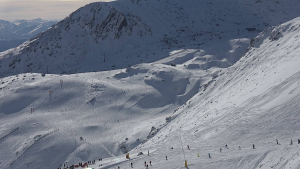Maori Signs for Reading the Winter

Maori believe the position of the Matariki Constellation is an indication of a good winter at Turoa. Image – Courtesy Mt Ruapehu
Words :: Aaron Cook, Moutainwatch.com Meteorologist
Mountainwatch.com recently published a story looking into what sort of snow we can expect for the New Zealand winter. The problem is, western science doesn’t have much to say on this and seasonal climate forecasting is only slightly better than tossing a coin.

But many Maori ‘iwi’ (tribes) in New Zealand have a long tradition of using the signs of the natural world to forecast the weather, so I got in touch with Darren King from the Maori Environmental Research Group at the National Institute of Water and Atmospheric Research in Auckland to discuss Maori environmental knowledge.
King says researchers are busy collecting these “tohu”, or signs, from elders around the country. “These tohu would not exist unless they had a fair degree of success,” he says. “They have not formally been validated using western science, but they are validated in very local ways by local people using them”.

In terms of snow forecasting, there are a couple of interesting tohu for the Central North Island, which encompasses the ski-fields of Whakapapa and Turoa on Mt Ruapehu.
The first tohu is from the Ngai Tuhoe iwi and applies to the star Autahi, otherwise known as Canopus. If the rays of Autahi shine toward the south, a cold, rainy season is set to follow, but if the rays shine toward the north, the season ahead will be mild and warm.
The Ngai Tuhoe also follow the Pleiades constellation, which is known as Matariki to Maori. If the stars of Matariki appear close together in the sky, then a cooler season is expected, but if they appear far apart it will be warm.
Matariki heralds the Maori New Year and first appears low on the horizon in late May or early June. If you live in the central North Island, why not email us once Matariki has risen and tell us how it’s looking? info@mountainwatch.com
King says the important thing to note is that Maori would look at several different tohu to gain an indication of the season ahead. If there were several signs all pointing in the same direction then their confidence would be increased.
Believe it or not, this parallels the work of climate scientists, who often consult several different climate models to arrive at a consensus forecast.
Turoa forecasts,
snow reports and
live snow cams.
Whakapapa forecasts,
snow reports and
live snow cams.




